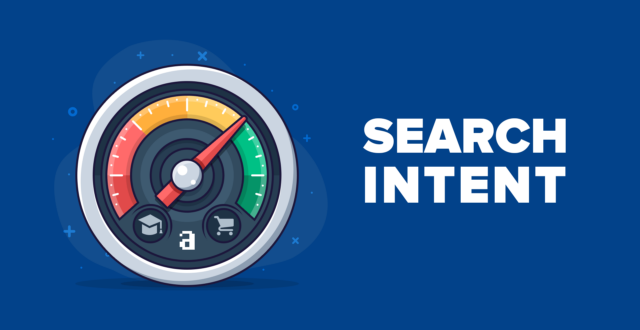
With Google and other search engines shifting their focus toward providing users with the most relevant and effective search results, it’s not surprising that digital marketing is constantly changing.
With that said, starting a digital campaign without understanding the importance of a user’s intent can be more harmful than beneficial.
A St. Pete digital marketing agency believes that you need to learn how to harness the intentions of search queries and how they impact your digital marketing campaign to adapt to these changes.
What Is Search Intent?

Search intent, also known as “user intent,” is a search’s primary purpose or goal. Google’s algorithms allow the search engine to identify the intent of a search and then display the best results. These snippets are called the Knowledge Panel and the Answer Box.
Understanding how different users search will allow you to optimize your website and make a difference in your digital marketing campaign. You can also use search intent to identify keywords to target the right people.
What Are the Different Types Of Search Intent?

Let’s now move on to the different types of search intent. Understanding their differences can help you make the most of your content.
Navigational Intent
These searches are used to locate a website. Instead of typing the URL, people type keywords. It is much easier to type website or brand names with specific keywords. For example, you could type “Facebook login” instead of www.facebook.com.
Informational Intent
As the name suggests, this search intent is used by people looking for specific information about something. It could be a definition or guide, or even a recipe. Most users start their query with “how to,” “why do,” “where is,” and “what is.” Others might only need to type a term to find the information they want.
Transactional Intent
Transactional search intent is when a person searches for information to help them make a purchase or call or visit a store. The search terms for Transactional Intent include a brand name or the product’s actual name.
Commercial Intent
Commercial Intent users research or investigate a product, subscription, or service. This type of intent has narrowed down the options available to them.
They are now in the comparison stage, weighing the options that suit them best. They are also likely to have moved up the buying funnel.
These intentions can be divided into high intent and low intent. Keywords with low intent have either an informational or navigational purpose.
This indicates that the user will wait to make a purchase. High-intent keywords, on the other hand, indicate that a user’s search queries will likely lead them to a sale.
The Importance of Search Intent
It is not enough to include keywords in your content. Your content should align with your audience’s intent. Here are some reasons why it is crucial to match search intent with users’ information:
1. It helps you keep leads on your site

Google is pleased with the time that users spend on your site. Users will not need to look elsewhere if you provide accurate and relevant information. They will stay and browse your content.
Google will increase your website’s rank to provide users with the most relevant information. It will improve your rankings and help you get more leads. You’ll be more likely to sell if you have relevant leads.
2. It puts you in a position of authority
You can be at the top of your industry by matching users’ search intent. Users will feel that you have a deep understanding of the industry, and the information you share gives them the impression that you are knowledgeable about the products, services, and field.
People will likely seek your help if they have questions about your industry. This is a sign that you have earned their trust and loyalty. It will also increase website traffic and improve your website ranking.
3. It increases brand awareness

Search intent is a critical factor in securing the top spot on SERPs. Users will stay longer on your site if they find more than they are looking for. They will get to know you and your business. Users will choose your brand over all the competitors if you have a good relationship with them.
4. It is more in line with users’ needs
You can meet users’ needs by using search intent. Search intent allows users to find the information they want by matching their search query with their intent.
After they have found the answer, they will engage with your content. You might even get a share or comment. You will get more traffic, better conversions, and relevant leads if you can fulfill their needs.
Strategies to Optimize Content for Search Intent

Search intent is a key factor to consider when optimizing content for SEO, as it helps determine what type of content to create and how to optimize it. Search intent refers to the purpose of the users’ search query; in other words, what they are looking for or trying to accomplish.
Search engine algorithms are designed to show users content that meets their expectations, so understanding and aligning your content with user search intent can help you rank higher on SERPs and improve visibility.
There are several strategies you can use to optimize your content for search intent, including:
- conduct keyword research: Choose keywords that reflect user search intent and are appropriate for the topic of your content.
- analyze competition: Examine other relevant content such as competitors’ websites or blog posts, taking into account the language used in titles, headings and page contents.
- organize related topics: Group related topics into distinct categories or sections within your webpage or blog post and provide internal links throughout them.
- use visuals wisely: Incorporate visuals such as diagrams or infographics that add value while explaining complex concepts.
- preview & monitor SERPs: Use variations of your keywords in title tags and headings to track rankings organically on SERPs over time.
Wrapping Up

Understanding search intent is a critical step in creating user-friendly content. It also plays an essential role in optimizing pages for user experience. Google approves of websites that have both search intent and content strategies.
The key takeaway? Your buyers’ journey should be seamless and engaging. If you know your target audience’s search intent, you can provide them with helpful information, guide them through the options, assist them in their research, and offer a great user experience.









